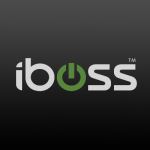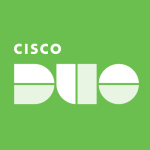We are using it for user navigation. We have another solution for the server, and Umbrella is used for the people in the company for web access and security purposes. It helps to avoid security problems and authorize different types of access to the users for different web services.
I am a network administrator, and for me, it is the best solution because it is easy to manage. It is also effective for web access for the users.
With the old solution, we had a lot of restrictions because it was old technology and it was very important to provide different types of access. Umbrella is a cloud solution, and we can add access to new services or websites. It is a good product.
It is totally transparent for the users. When you have Cisco Umbrella on your computer, you cannot really see the product. It is very important for the users to not see the product.
It is very easy to manage, which is really important. We do not have time to manage this solution, and it is really important to have a good performance without any action or monitoring from my team. We work with Umbrella every day, but we don't need to make any changes on Umbrella because it is working.
It is easy to maintain network connectivity consistently across all workplaces, and it has been a good experience for our employees.
It provides resilience on all the sites. We have five sites, and all the sites have Umbrella.
It is user-friendly. It is easy to manage the solution.
Their support should be improved. It is necessary that the support is efficient. It is not really easy to get a resolution for an issue from Cisco support. They should be faster and more efficient.
I have been using this solution for about three to four years.
It is very stable. I do not have a problem with this. We only had one bug three months ago, and we had a problem with the support, but before that, it has been a good experience.
It is scalable. We deployed it on different sites of the company. We use it for a lot of different services.
We have about 600 users, but we have 1,000 licenses. We might increase its usage.
Cisco Umbrella's support is not really efficient. When we have a problem, it is difficult to have good support. It is not really easy to resolve a problem with Cisco support. Three months ago, we had a problem with it, and the support was not very efficient. I would rate them a six out of ten.
We had a French solution. It was an old solution, and it was not sufficient for the company. Cisco Umbrella has been the best for our company.
It is not really easy, but because we have experts with us, it was not complex for us. We did this in one month because it was really important to give good services to the users.
We have seen an ROI, but it is hard to provide metrics.
We did a good negotiation, and at the moment, its price is fine.
I didn't look at other options. I only tested Cisco Umbrella.
It has probably helped us to remediate threats more quickly. It is a good solution for user devices but probably not for servers.
I would rate it a seven out of ten.















